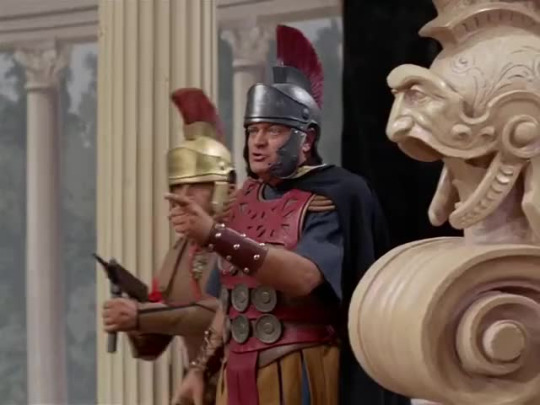#Kate Wagner
Explore tagged Tumblr posts
Text



Thanks go to @lupismaris for the inspiring tags on my butch Wolverine post:

To answer your question, she’s single on paper but there’s a line of dykes wrapped around the x-mansion competing to invent new unseen forms of unhealthy relationships.
#I love the classic suits#couldn’t pick one ship for this so I just drew all my favs#might revisit that beer pose with OCs because it’s hot as fuck#butch wolverine#the wolverine#wolverine#butch#butchfemme#lesbians#logan x kurt#logan x Bobby#logan x scott#fanart#comics#logan howlett#Kurt Wagner#Kate Wagner#night crawler#Scott Summers#Scarlett Summers#cyclops#X-men#x men comics#Bobby drake#Bobbie Drake
144 notes
·
View notes
Text
The extinction of clip art as a concept is a looking glass reflecting what makes the modern computer experience so unpleasant. It’s not even that nothing is free anymore; it’s that nothing is its own product anymore—everything has been reduced to the piecemeal, from individual images to creative labor itself. It is actually cheaper for me to hire a graphic designer on Fiverr than it is to buy a single image on Shutterstock. Hell, I don’t even own the means of creative production anymore—I rent them from Microsoft and Adobe. Meanwhile, copyright trolls and social media crawlers have locked down and watermarked so much of what’s online that searching for images is almost a pointless endeavor in and of itself. No wonder there’s so much demand for AI products like Dall-E and Midjourney. They, also now monetized, fill a niche that clip art once filled, which is to say, they take up a blank space on a page.
-Kate Wagner
235 notes
·
View notes
Text








Excerpts from Kate Wagner’s Behind F1’s Velvet Curtain
#sir lewis hamilton#kate wagner#whole article is absolutely fantastic but i'm biased and these bits stuck out to me#the article is about the 2023 season and the w14 but i am ignoring that to focus on the w11 my beloved#f1#formula 1#lewis hamilton
43 notes
·
View notes
Text

McMansion Hell curator Kate Wagner wrote an article for Road & Track that was published then unpublished in the same day because, well, she told some uncomfortable truths.
You can read it here, courtesy of the Internet Archive.
36 notes
·
View notes
Text
The subtext [Let People Enjoy Things] image is a fourfold confession: 1) “I do not want to feel judged for my consumption choices”; 2) “I want to silence people who disagree with me about this particular piece of media by making them feel like they are cheerless or judgmental”; 3) “I recognize an aspect of this piece of media that is worthy of criticism, and I am defensive of this;” and (4) “I do not want to think critically about the things I consume, and if I absorb any criticism about the things I consume it will magically ruin my enjoyment of them.”
Kate Wagner, Don't Let People Enjoy Things
#Kate Wagner#Don't Let People Enjoy Things#judgment#silencing#media#criticism#enjoyment#quote#let people enjoy things#rebuttal
3 notes
·
View notes
Text
Laws of Architraction

Sorry, Nawin, you're smokin' hot, but your taste in architecture is as erratic as your temperament. This belongs on @mcmansionhell and deserves a special.
"Special" as in

"You bring this network's ratings down, Flavius, and we'll do a 'special' on you."
#mcmansion#kate wagner#laws of attraction the series#laws of attraction ep 7#star trek tos#star trek bread and circuses#gene roddenberry's ridiculous stories
3 notes
·
View notes
Text
"Generally speaking, we have lost respect for how much time something takes. In our impatient and thus increasingly plagiarized society, practice is daunting. It is seen as prerequisite, a kind of pointless suffering you have to endure before Being Good At Something and Therefore an Artist instead of the very marrow of what it means to do anything, inextricable from the human task of creation, no matter one’s level of skill."

57K notes
·
View notes
Text
You cannot outsmart capitalist firms that have the power and the intent to buy control from you.
0 notes
Text
In addition to running McMansion Hell, Kate Wagner apparently writes super insightful stuff about cycling and now F1 (until her piece got removed after a few hours—kinda obvious why if you read the article).
"Send me on an experience and I'll have an experience. Sadly, I suffer from an unprofitable disease that makes me only ever capable of writing about the experience I'm having. The doctors say it's terminal."
1 note
·
View note
Text
What a nightmare. I hope you recover whole and well.
About my last few months.
1K notes
·
View notes
Text

I just think it’s been a while since we’ve had a circus x-men comic…
(Reposted with edits to the lettering because more than one person read it as ‘edible’ and they were right 😂😂)
#x men#wolverine#logan howlett#nightcrawler#kurt wagner#comic art#fan art#poster#cover art#Kurt ran off back to the circus and made Logan join him#kate komics
2K notes
·
View notes
Text
0 notes
Text
“To make things more complicated, the field’s exclusion of minorities—coupled with its predilection for patronizing tokenism toward them—has also given Adjaye, a Black man, an extra layer of protection and insulation from criticism. He is not just a famous architect; he is a trailblazer. No one wants to be the employee who ruins the career of one of the few famous architects of color. It’s reasonable to anticipate that their allegations will be weaponized by bigots to reinforce their stereotypes and prejudices. The fact that all three women were Black should remind us that the role race plays in architecture is more nuanced and intersectional than Adjaye’s photo ops with Barack Obama would have us believe. His fall should put to bed the idea that one man’s success in a world that views him as an other is in any way tantamount to a real reckoning with race in architecture.
It bears repeating: Adjaye is an employer. His abuse is workplace abuse—it cannot take place without the infrastructure of the workplace to provide him power and access to victims. While his case is particularly spectacular in its violence, it is of a kind with abuse that happens in architecture firms around the world. All workplace abuse is irrevocably linked with worker precarity. The environment of architectural workers is particularly conducive to exploitation, since it encourages self-abuse: long hours, unpaid internships, unnatural devotion to “the project,” and identification of the self with the workplace.
…
These allegations should not be viewed as the ignoble and unfortunate end of what was once a fairy-tale story. They should not be viewed as an isolated instance of brutality. They should be viewed as a wake-up call. All of the elements that allowed Adjaye’s harm to go unpunished for so long are present in one way or another in all firms. They are inherent in the very culture of the discipline, which has become increasingly stratified, with entry-level workers seen as especially disposable and exploitable. Young architects, after being told all through school that they will be embarking on a journey to change the world and shape the built environment, instead find themselves working 10-hour days using mind-numbing software to catalog how much insulation is needed in a given wall. Receiving any scrap of acknowledgement from the great masters who run their firms more like despots than artists feels especially rewarding in such an uninspiring environment. Combine this dynamic with a culture of virulent racism and misogyny, lack of financial security or upward mobility, and precarious employment visas, and you have an environment that is primed for exploitation. The fact that this exploitation takes on a sexual dimension is no surprise when domination—over the workplace, perhaps over the built environment itself—is the order of the day.
A solution to these problems requires a world in which architectural workers see themselves as workers and where starchitects like Adjaye are no longer seen as gods. It also requires labor organization in the workplace; as in all corporate settings, institutions like HR (if firms even have it) are designed to protect the company, not its workers. Whether through activist organizations such as the Architecture Lobby or through unionization, architectural workers need accountability and support from outside their firms. Unionism in architecture is in its infancy, but solidarity among the field’s workers is rising year by year.”
1 note
·
View note
Text

Watching a crappy movie, as I do, and one of the main character's names caught my eye... ;)
1 note
·
View note
